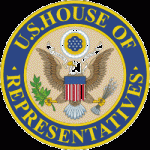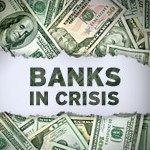IN A NUTSHELL
The state of today’s U.S. economy has been defined as income inequality. While the salaries and benefit packages of current CEO’s are on average 295% more than their employees without any additional duties, ‘income inequality’ really doesn’t properly reflect what ought to be the true name – economic inequality.
What is it all about? The fact that after 40 years of building the New Deal with liberal principles under President Franklin Delano Roosevelt, the American government became the nation’s largest employer. And now 40 years or so after conservative-based Reaganomics ended the New Deal forever, what America is today is a debtor nation in the World; with an economy in which one-tenth of one percent of the people own 25% of the nation’s wealth; where all the middle class jobs for college graduates went to Europe or Asia and the Middle Class is disappearing; where 295,000 new jobs in February 2015 only increased wages by one-tenth of one percent and 40 million Americans owe one trillion, four hundred billion in student debt.
The story goes that President Barack Obama saw Steve Jobs at a dinner-event and asked him why he doesn’t bring Apple’s IPod and IPad manufacturing back to the U.S. And that Mr. Jobs looked back at him and said dismissively “Because they do it better in China”.
Mr. Jobs didn’t have to mention profit margins – certainly cheaper to manufacture in China – that’s taken for granted.
But that was a few years ago. Today the latest news is that Apple, Microsoft, Google and five other tech manufacturers have added a combined $69 billion to their stockpiled offshore profits in 2014 just to avoid American taxation. These 8 corporations account for more than 20% of the $2.10 trillion in profits that U.S. companies are holding overseas.
THE NEW AMERICAN WAY?
Withholding income from American taxation by keeping it abroad is only the latest effort by American business to maintain economic control – and with it political control…because you can’t have one without having the other.
It all started with America ceding its industrial power and capacity to Germany, Japan and China. American business would earn higher profits without being in manufacturing…we became purely a corporate economy with profit on a quarterly basis the benchmark of success.
Corporations were sending American middle class jobs out of the country to Asia and Europe in unprecedented numbers. Strong profit margins brought huge paychecks and previously unimagined bonus arrangements.
Increasingly, corporations retained income earned in world markets in European banks to escape paying taxes on it…and increased that practice by buying European businesses and using those locations as National headquarters again keeping income away from American taxation.
And as the Bush Administration attempted to build on the initial success of the Reagan Administration’s efforts to end the New Deal forever, the mantra became “don’t tax the rich; lower corporate taxes – support the Job-Creators and they’ll use the money to start or expand businesses and provide jobs.” Which of course they didn’t do then and still don’t. Myths sound good but even endless repetition doesn’t turn them into facts.
HOW IT WORKS
 While the past several years have shown us what seems to be a government crippled by inaction, don’t be fooled. The absolute control by certain extremely wealthy power players who are responsible for electing about 50 or so members of the House of Representatives, gives the impression that everything is stalled. But that’s just the impression.
While the past several years have shown us what seems to be a government crippled by inaction, don’t be fooled. The absolute control by certain extremely wealthy power players who are responsible for electing about 50 or so members of the House of Representatives, gives the impression that everything is stalled. But that’s just the impression.
The government is working. It’s working for the one-tenth of one percent providing tax breaks through loopholes, corporate welfare (assistance at every juncture), bailouts from scams and schemes that failed even as their victims are lucky to receive a pittance, and a freedom from legislation which would curtail their activities.
The government is working…but just for the lobbyists and other corporate power players.
So what has all this produced?
Keep in mind that the key result of all this activity is to keep the after-tax rate-of-return as high as possible. This can only be done through political decisions which ensure that outcome.
That’s when the clear evidence of economic and political inequality shows itself.
So corporate welfare increases as we curtail welfare for the poor. Congress maintains subsidies for the rich, corporate farmers as we cut back nutritional support for the needy. Drug companies have been given hundreds of billions in grants as we limit Medicaid benefits.
 The banks that caused the global financial crisis with predatory lending practices got billions while their victims saw very little. Banks paid back the billions and stopped lending. We could have helped underwater homeowners directly which would have helped the entire economy…but that was not the desired result.
The banks that caused the global financial crisis with predatory lending practices got billions while their victims saw very little. Banks paid back the billions and stopped lending. We could have helped underwater homeowners directly which would have helped the entire economy…but that was not the desired result.
Nor is the desired result that Warren Buffet pay something more on his tax rate than his secretary. And so even as he publicly recognizes the inequity…nothing changes.
The Reagan Great Divide seems to be at its strongest effect…but it is over…as is the 20th Century. We can talk about the end of the middle class, the fact that one-quarter of American children younger than 5 live in poverty and that this problem is generational and continues without any apparent end.
 We accept without grievance that colleges and universities raise their tuition at will knowing that government-backed bank loans will pay the bill…and that the bill is now one trillion 400 billion dollars with 40 million people involved…and the government will gain $66 billion in interest payments.
We accept without grievance that colleges and universities raise their tuition at will knowing that government-backed bank loans will pay the bill…and that the bill is now one trillion 400 billion dollars with 40 million people involved…and the government will gain $66 billion in interest payments.
We even see that the American justice system appears to be one way for those in the upper class and another way for everyone else.
But the fact is that by seeing all of this, by recognizing that inequality is not just technical economics but a matter of politics – and then identify those who influence it – we have come through the darkness and can find a new system that works better for everyone.
Ensuring that those at the top pay their fair share of taxes, that American companies cannot keep their income offshore and away from taxation, that the politics of greed can be controlled, and that America can spend money on education, infrastructure and health…key changes can bring us back to what liberals are calling for – a shared economy – not a privileged one.
We had that economy during World War II and everyone profited and grew. If Americans will vote again in numbers greater than one of every three eligible voters changes can be made.
A SHARED ECONOMY
 The key phrase that will soon replace income inequality is: inclusive capitalism…which has been described as a forceful market-oriented effort to counter inequality, restrain the constant additions to the vast wealth at the top and provide the working and middle classes with improved economic opportunities making our economic system more equitable, more sustainable and more inclusive.
The key phrase that will soon replace income inequality is: inclusive capitalism…which has been described as a forceful market-oriented effort to counter inequality, restrain the constant additions to the vast wealth at the top and provide the working and middle classes with improved economic opportunities making our economic system more equitable, more sustainable and more inclusive.
This effort at change will include major revisions of the tax code, legislation to pressure corporations to increase pay to match productivity growth and an expansion of refundable tax credits to include low-income workers as well as households making as much a $80,000 a year.
We will share a more detailed look at inclusive capitalism in a later report.
But concerning its political implications we need to recognize the differences between liberalism and conservatism in this 21st Century. While little has changed, subtleties matter.
The pure definition of both is measured on the basis of government involvement. Liberals talk of government supporting social fairness. Conservatives talk of government assisting individual effort.
Liberals talk of government leveling the playing field of opportunity – using legislation, regulation and tax strategies. Conservatives favor ‘free markets’ and government staying away from legislation, regulation and tax policies that would regulate markets and business behavior but would assist individuals to win opportunities on their own.
One economic fact that we can all understand is that ‘free markets’ in capitalism are worthless unless those at the bottom half of income distribution have enough financial resources to spend as consumers and that helps businesses keep gross domestic product at its capacity.
In order to move on from the past 40 years we will need new social and political institutions to make 21st Century capitalism work for the many and not the few.
